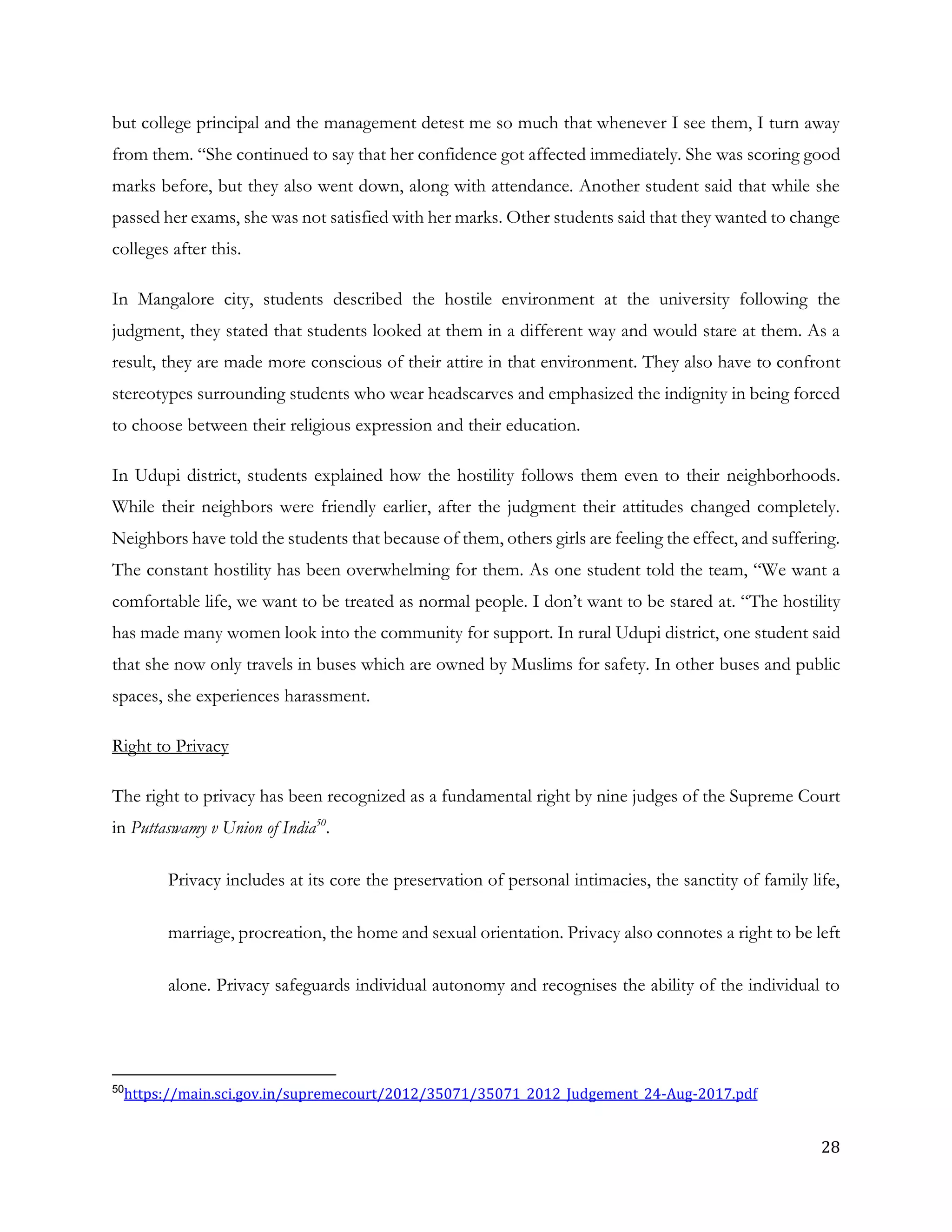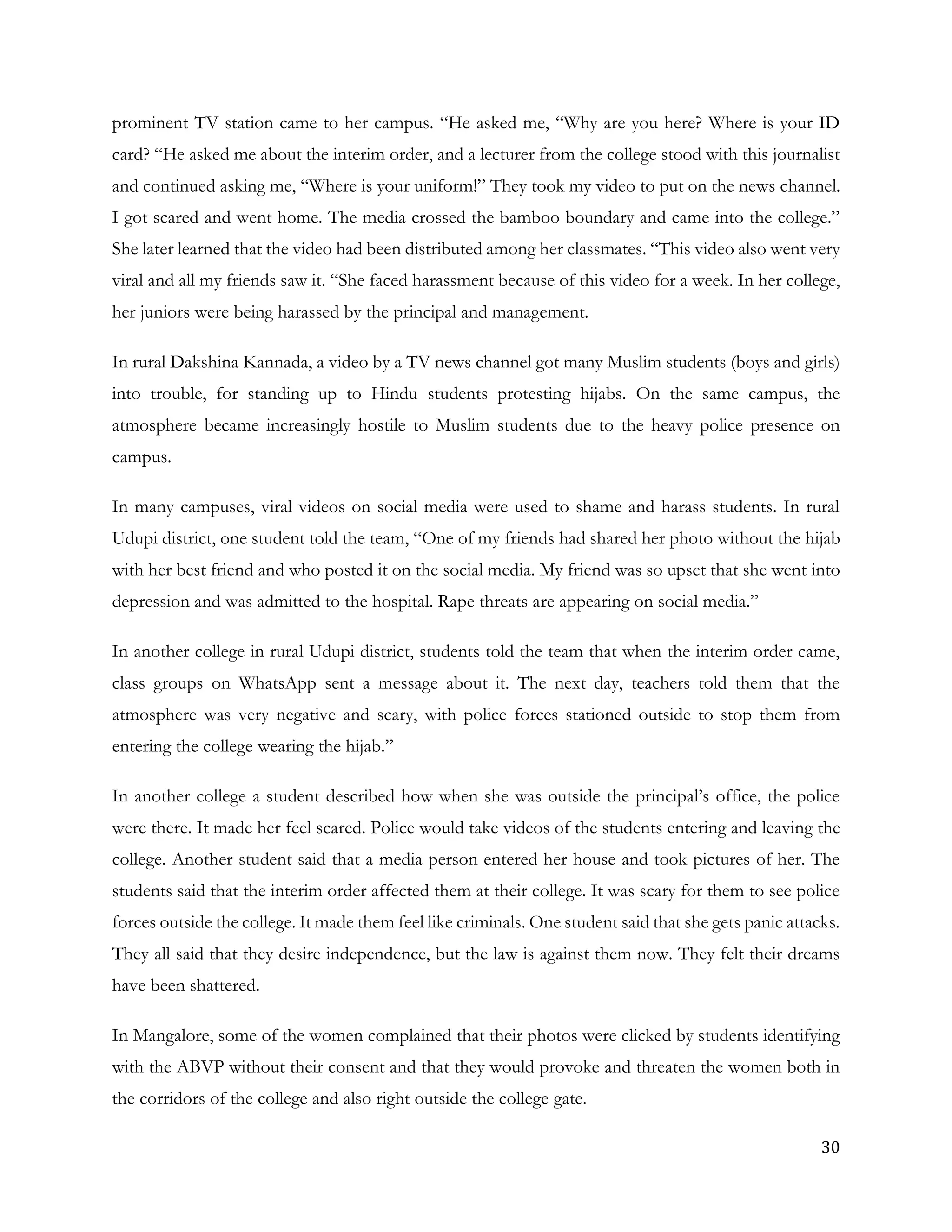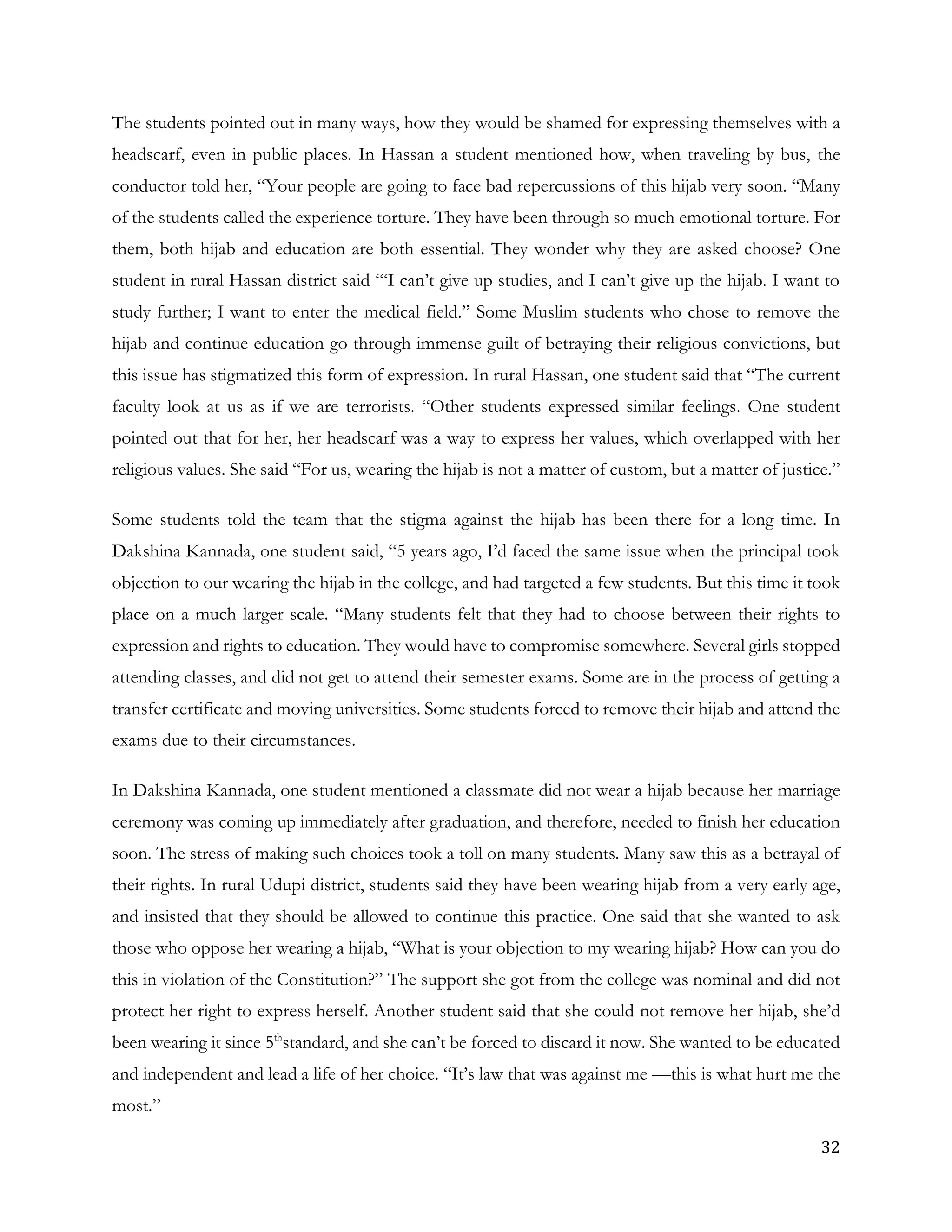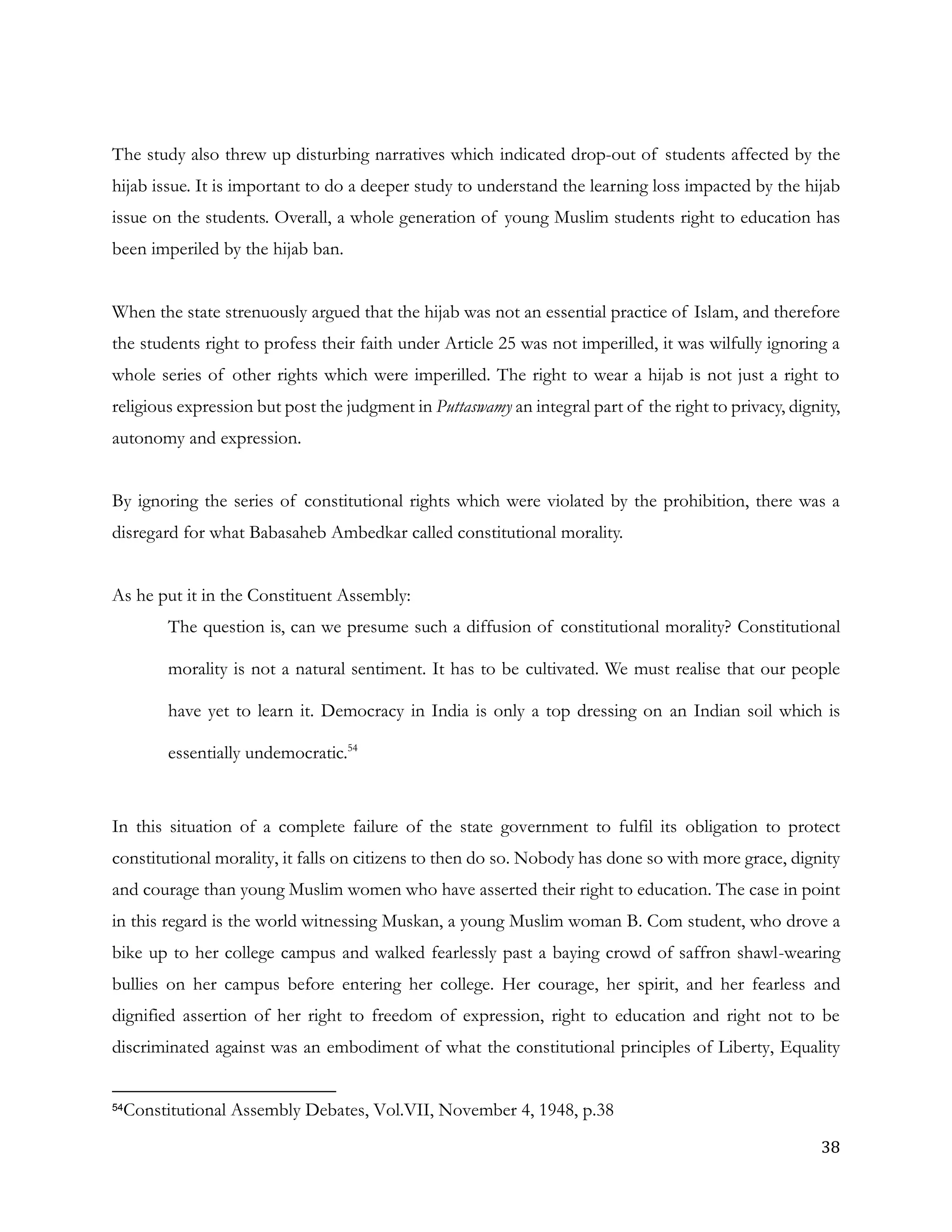The document provides a detailed timeline of events related to the hijab ban in Karnataka's educational institutions from December 2021 to March 2022. It outlines the key developments including protests by Muslim girls demanding their right to wear hijab in classrooms as well as counter-protests by saffron shawl-wearing students. As tensions escalated, the Karnataka High Court heard petitions challenging the ban and ultimately upheld the restriction of hijabs in educational institutions. The timeline captures the polarized atmosphere and escalating violence between religious groups during this period.


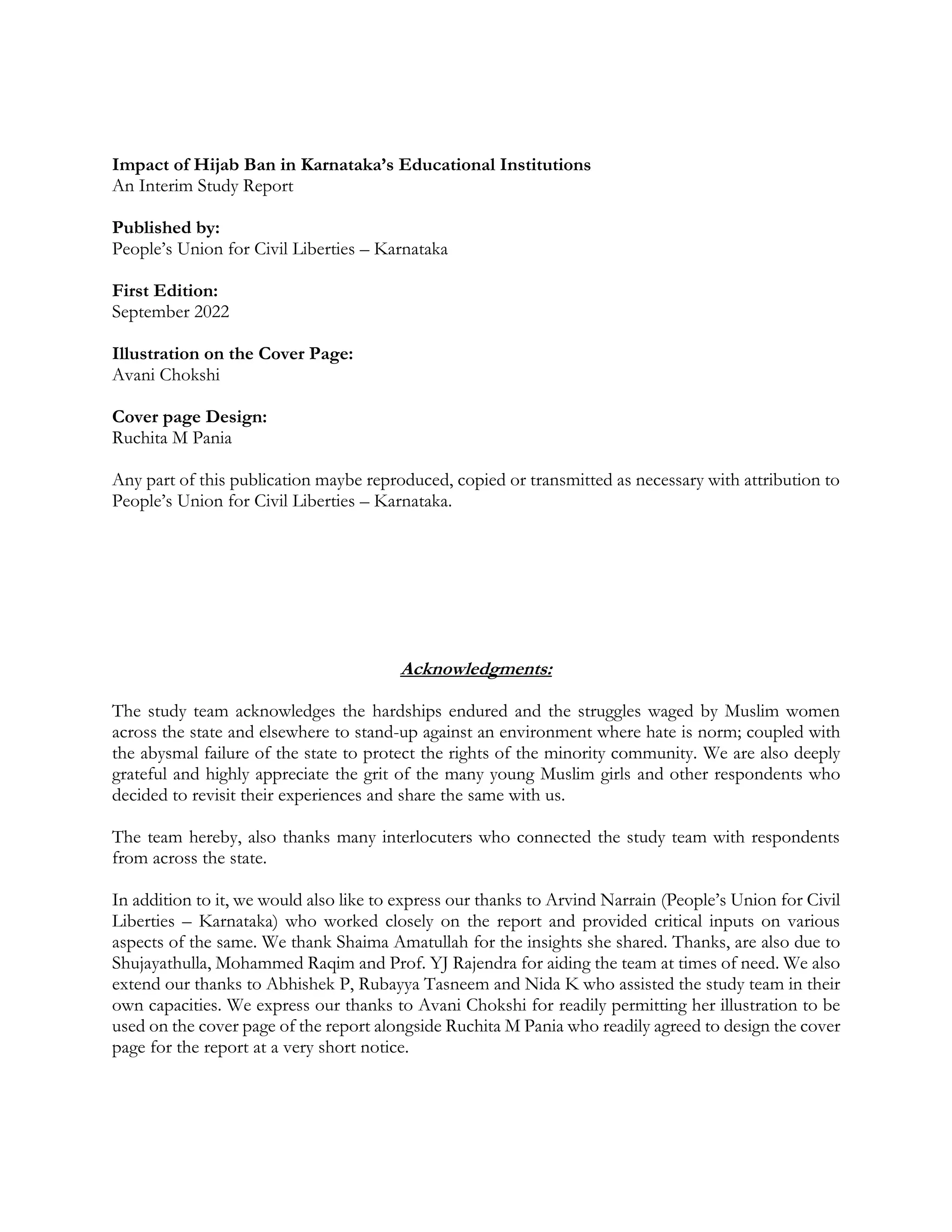




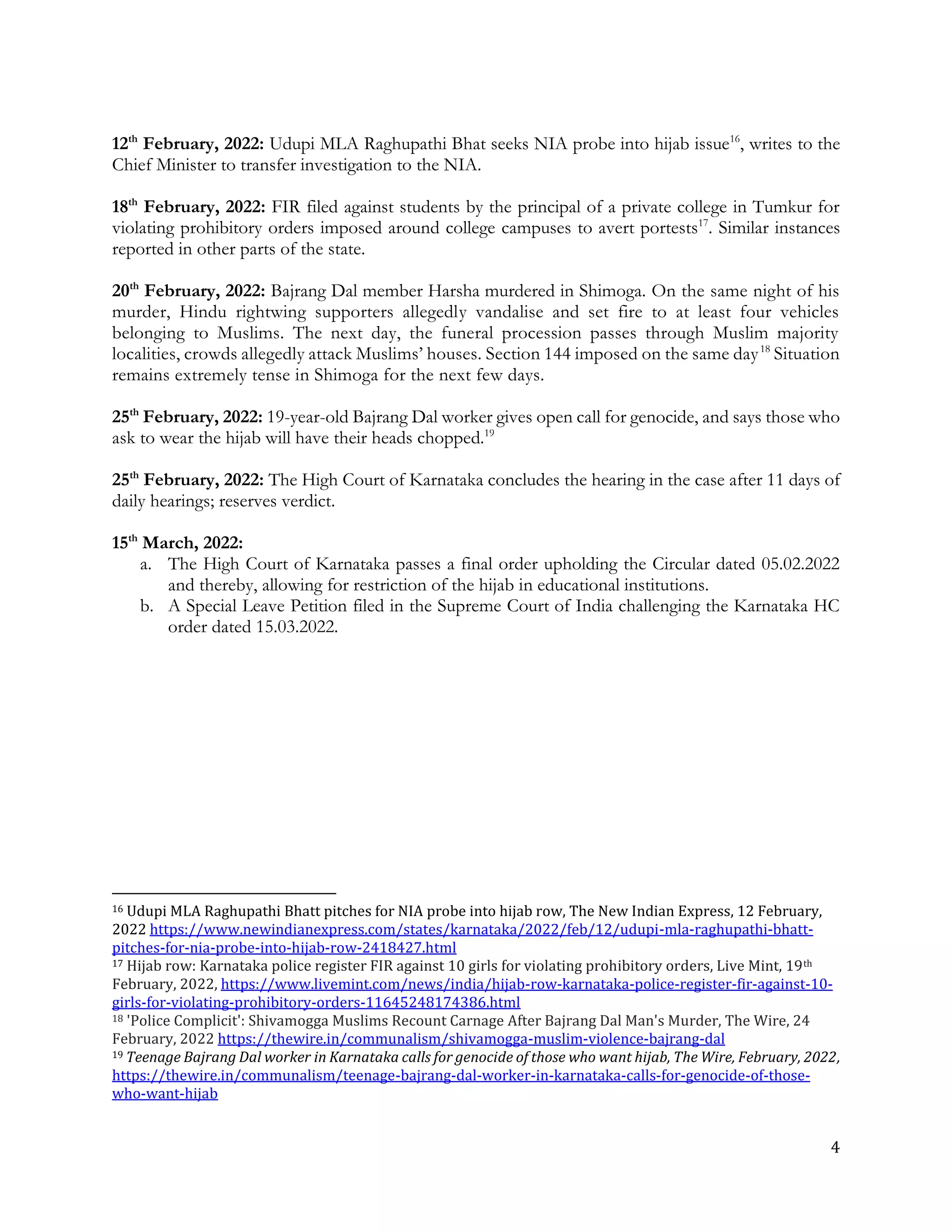







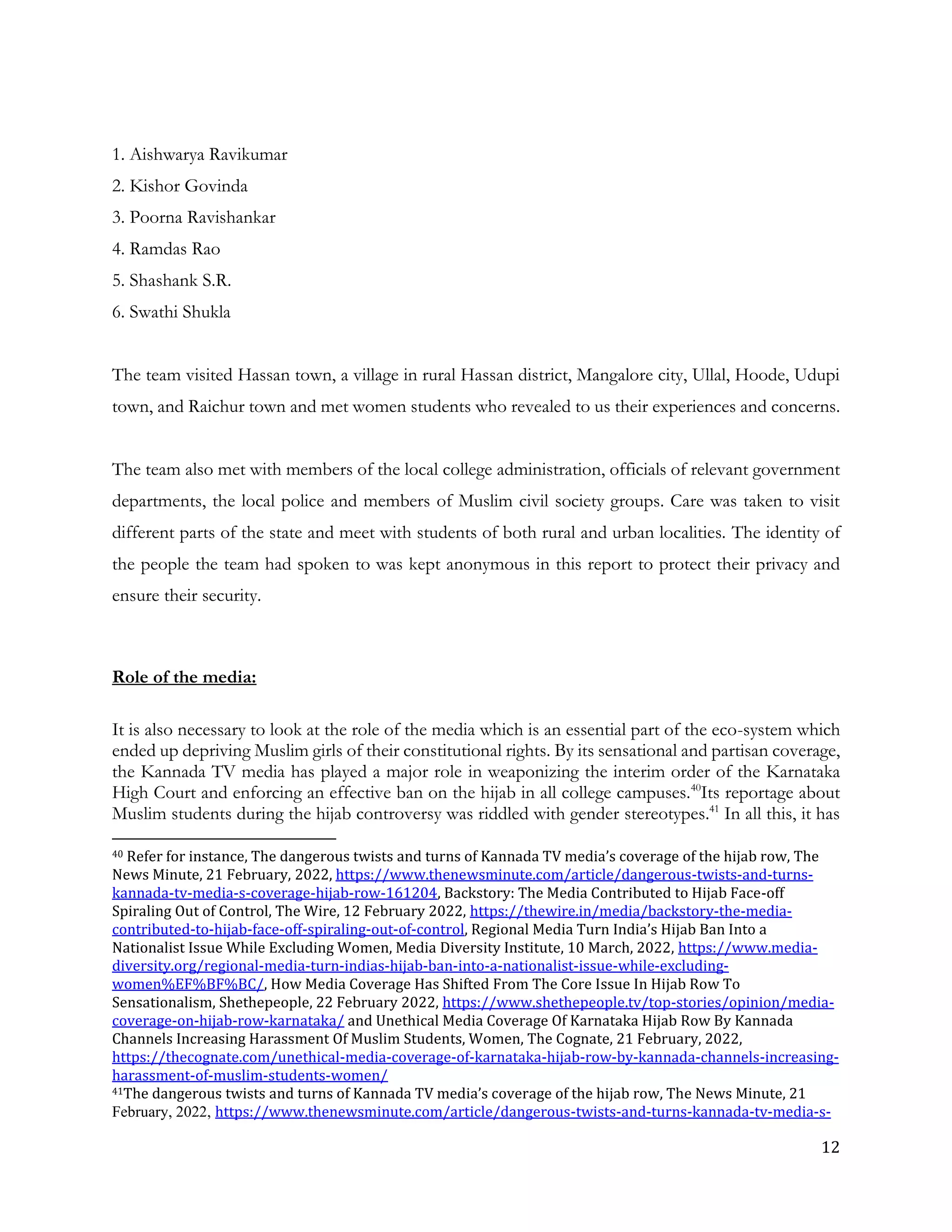
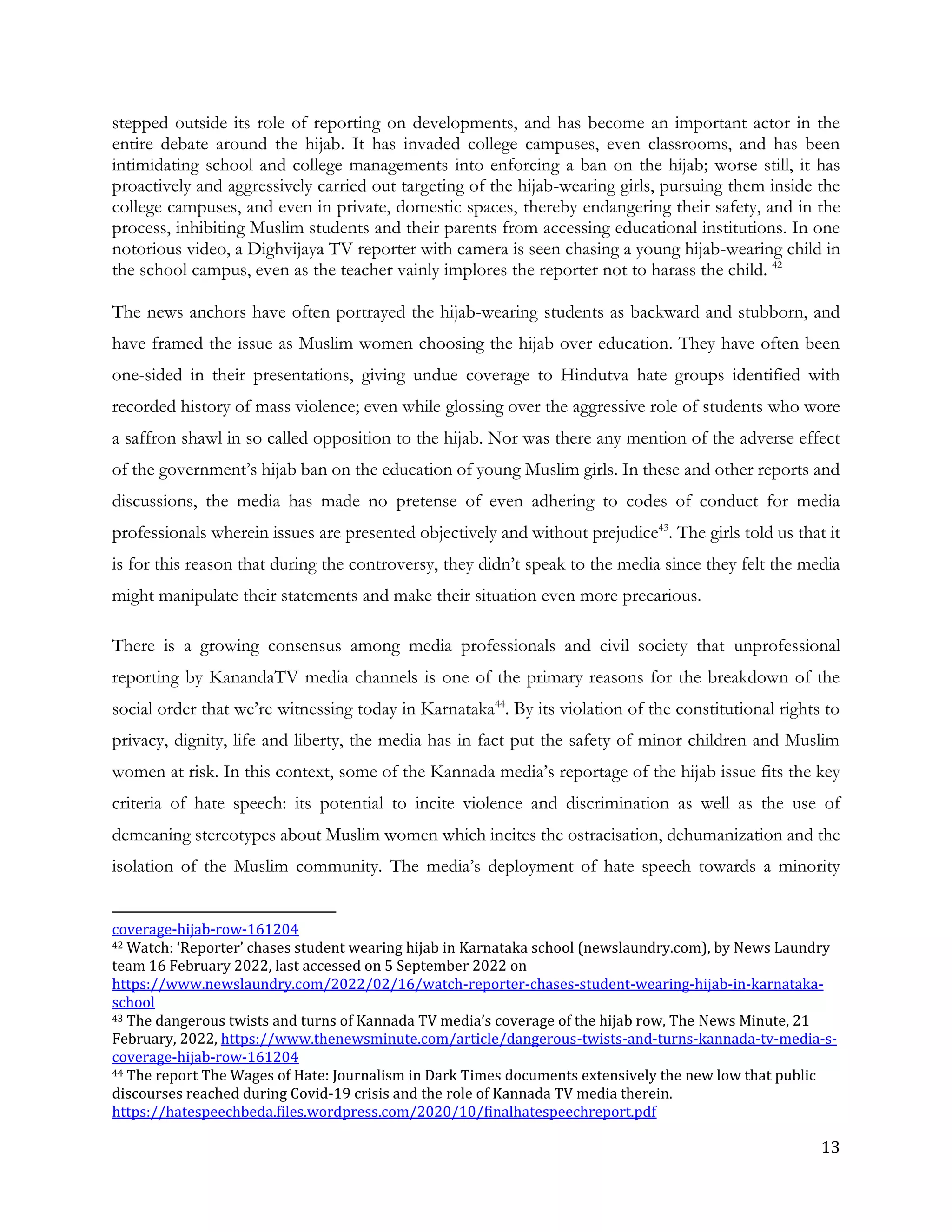

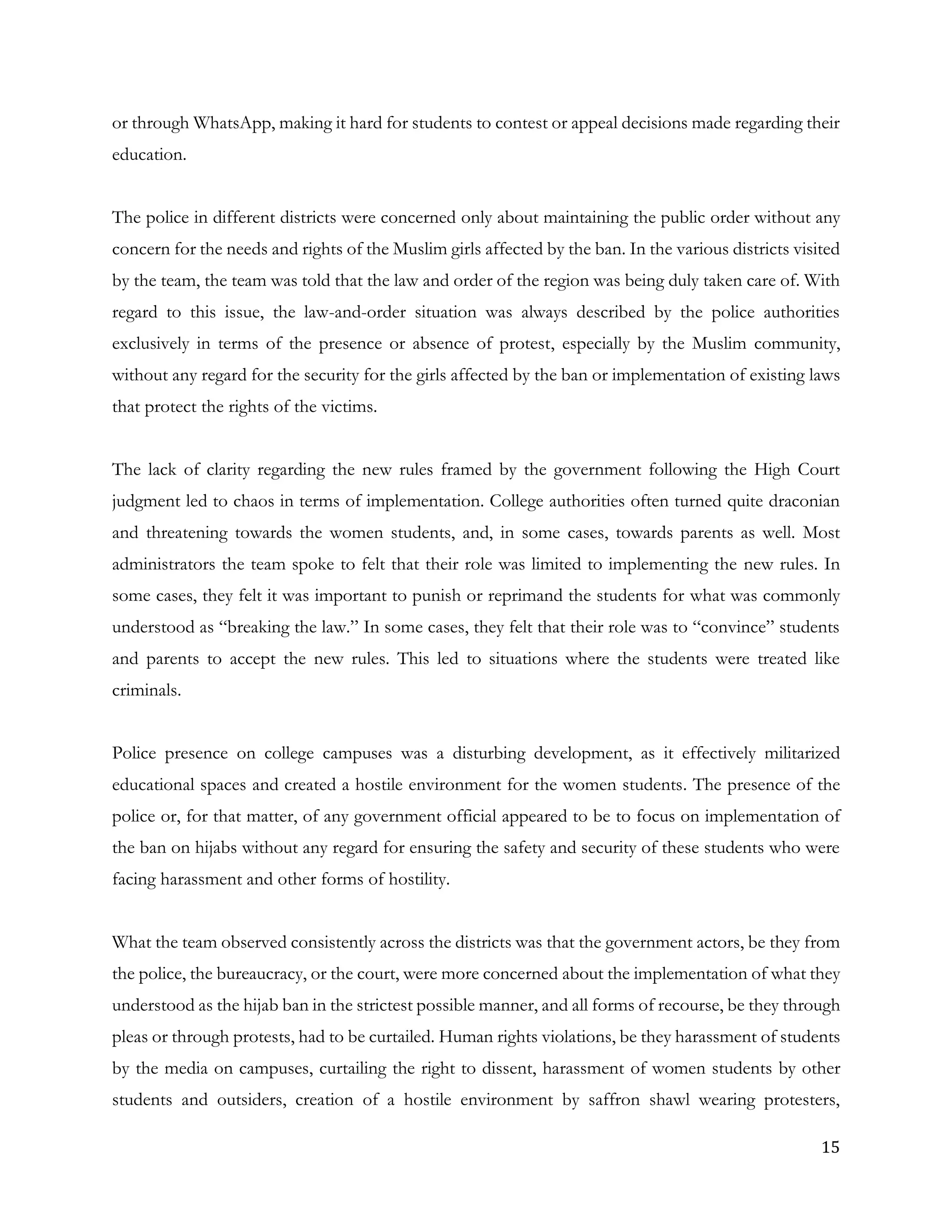


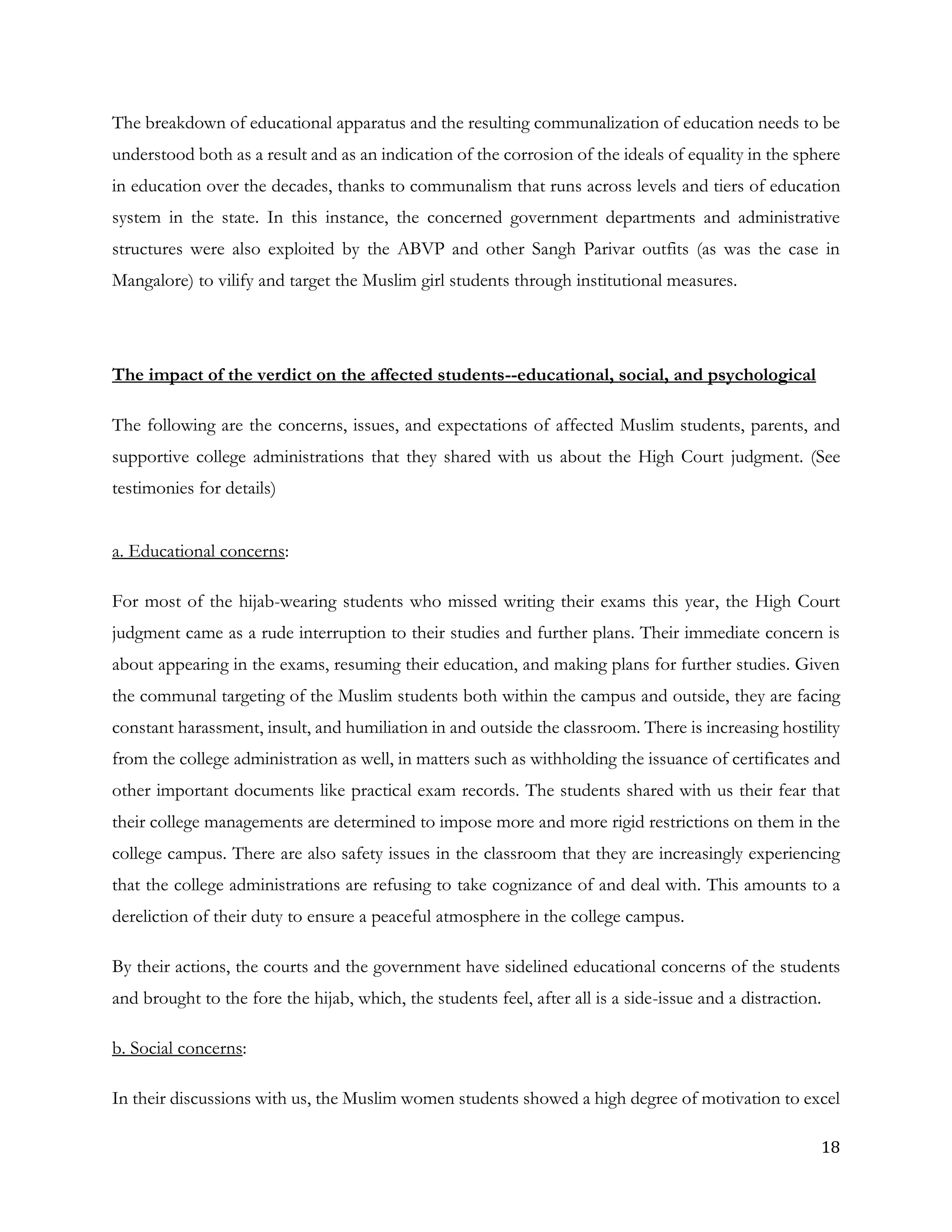




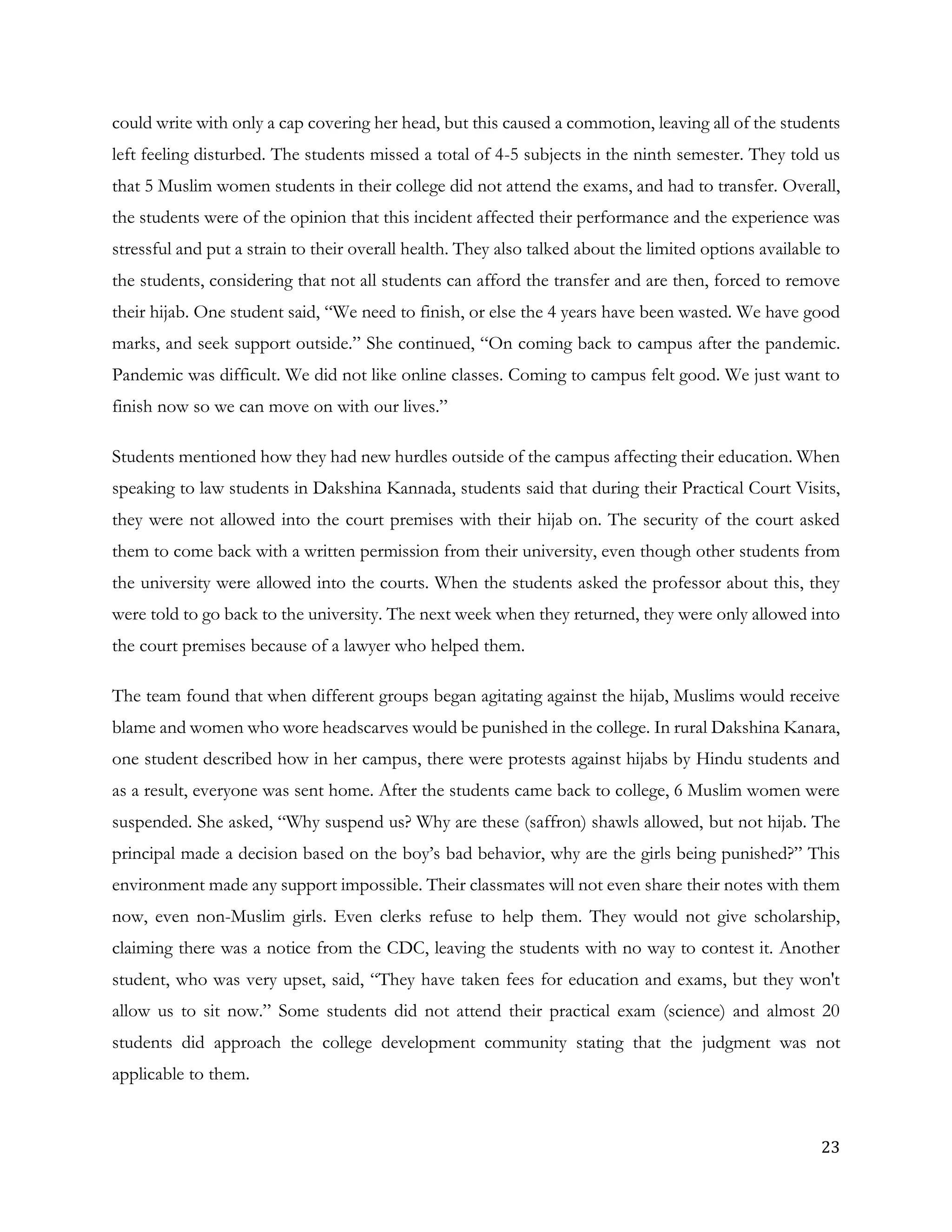

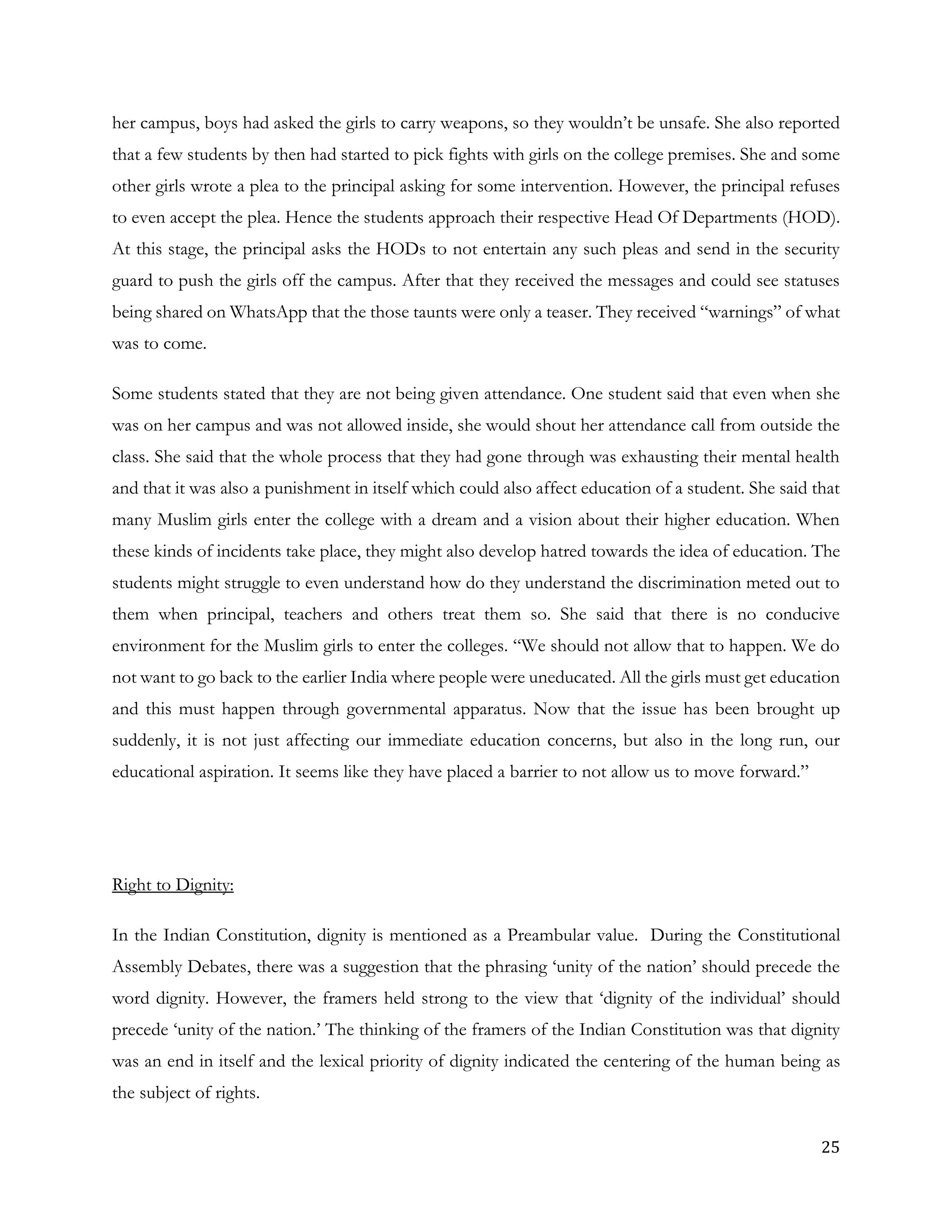
![26
The Supreme Court has over the decades interpreted dignity as being part of Article 21 of the Indian
Constitution. In Francis Corallie Mullin vs. Administrator, Union Territory of
Delhi 48
, the Supreme Court held that:
We think that the right to life includes the right to live with human dignity and all that goes
along with it, namely, the bare necessaries of life such as adequate nutrition, clothing and
shelter and facilities for reading, writing and expressing one-self in diverse forms, freely
moving about and mixing and commingling with fellow human beings.[..] it must, in any view
of the matter, include the right to the basic necessities of life and also the right to carry on
such functions and activities as constitute the bare minimum expression of the human-self.
In Navtej Singh Johar v Union of India49
the Court held that:
When biological expression, be it an orientation or optional expression of choice, is faced with
impediment, albeit through any imposition of law, the individual ‘s natural and constitutional
right is dented. Such a situation urges the conscience of the final constitutional arbiter to
demolish the obstruction and remove the impediment so as to allow the full blossoming of
the natural and constitutional rights of individuals. This is the essence of dignity and we say,
without any inhibition, that it is our constitutional duty to allow the individual to behave and
conduct himself/herself as he/she desires and allow him/her to express himself/ herself, of
course, with the consent of the other. That is the right to choose without fear.
In the interpretation of the Supreme Court, the right to dignity is about the right to expression and
about the right to choose without fear. It is only when you allow for the full blossoming of individual
choice that is integral to personhood that the right to dignity is safeguarded. In the context of the
48https://indiankanoon.org/doc/78536/
49https://indiankanoon.org/doc/168671544/](https://image.slidesharecdn.com/puclreportonhijabban01-220912040930-32f0effb/75/PUCL-Report-on-Hijab-Ban_0-1-pdf-30-2048.jpg)

